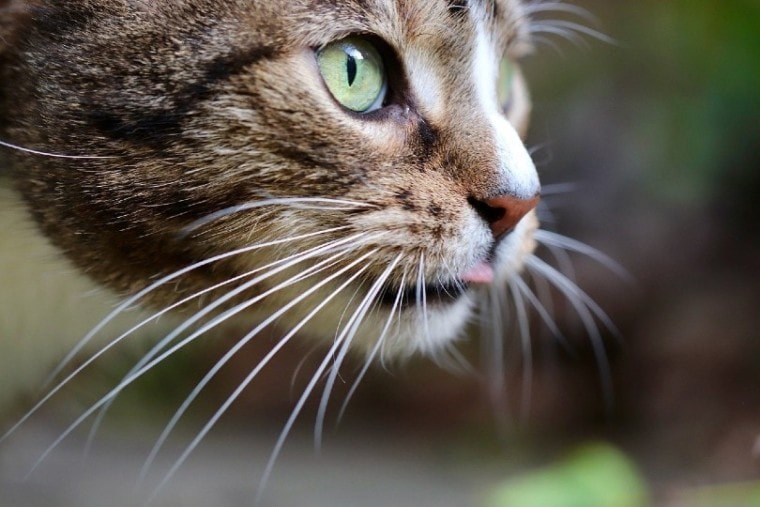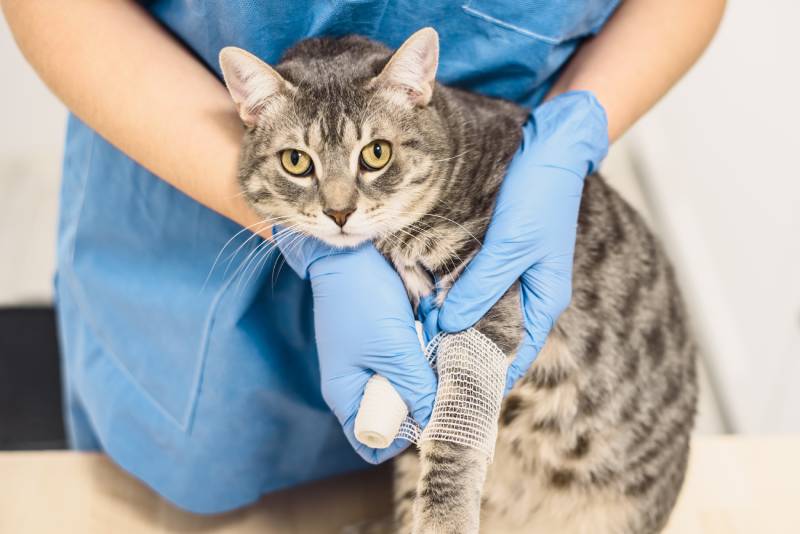
Whiskers are more than just thick pieces of hair poking out from a cat’s muzzle. These hairs are special little radars and perform numerous important functions, all of which help your cat live a happy and safe life. Whiskers are not meant to be combed, or cut off, but sometimes, a well-meaning error can be made, an accident or injury occurs, or you simply start noticing their whiskers are breaking off. Why is this happening, and is this normal?
Whiskers breaking off is quite common and occurs due to numerous reasons, which we dive into below. Have a read-through to see if any of the causes fit your circumstances, and then you can course correct.
What Are Whiskers?
Whiskers are a type of hair. There are four types of hair: primary or guard hairs, which are long and coarse, secondary hairs, which are shorter and softer, eyelashes (cilia) to protect the eyes, and whiskers, known as vibrissae. Vibrissae are touch-sensitive or tactile hairs, and they are much thicker and longer than the rest of the cat’s coat.
Vibrissae grow in specific places; namely, behind the carpus (wrist) and on the face. Vibrissae on the muzzle area of the face are known as whiskers. The amount of this type of hair is significantly less when compared to the other hair on the body, but vibrissae do follow the same phases of the hair cycle (i.e., the anagen, catagen, and telogen phases).

What Do Cat’s Whiskers Do?
A cat’s whiskers are a vital part of feline communication. These tactile hairs are used as sensory tools and receptors. Nerve endings in the bottom of the whiskers respond to hair movement and distances of space. This skill helps cats survive. They use whiskers for balance and to judge widths, distance, and space. Can they fit through a gap they’ve spotted to escape a bullying cat, for example?
The 4 Reasons Why Cat’s Whiskers Break Off
Let’s look into the causes of whisker breakage.
1. Rough Play
This is a very common cause for young and energetic cats. They love to play and can be a little too rough and tumble with themselves and others. These actions and their playful antics can lead to their whiskers becoming broken. Some sibling cats will also chew the whiskers of their littermates. As long as no other signs or issues are present, it is nothing to be concerned about, and they will grow back.

2. Natural Shedding
In the same way the fur covering their bodies has a growth and shedding cycle, which each hair and hair follicle follow, so do the whiskers. You may find that every couple of months, a whisker has fallen out. This is due to their normal hair cycle, which is completely natural and shouldn’t be a concern but may answer your questions as to why you find their whiskers on the floor every now and then.
3. Accidents, Injuries, and Trauma
Any accident, injury, or trauma can cause their whiskers to break off. If they have received a burn, had an incident during grooming, or had a fight with another cat, all these scenarios plus a plethora of others can cause their whiskers to break. They will grow back; however, other injuries and issues they may have also received at the same time will need an examination and possible treatment by your veterinarian.

4. Genetics
Some cats are simply born with wonky whiskers, which may look broken, but be completely normal for that cat. Certain breeds also tend to have more irregular whiskers, such as Sphynx cats. It may look odd, but these cats do get around and perform the same acrobatics as any other cat, so don’t be too worried if you notice your cat fits into this category.
Conclusion
Whiskers are necessary tools for felines. These receptors allow felines to receive information, such as distances and widths and whether they can fit through gaps. It’s like they are another type of physical sense for cats. Although whiskers should not be trimmed and will grow back if an incident has occurred, always consult your vet if you are concerned or if other signs are also being presented by your kitty.
Featured Image Credit: Annette Meyer, Pixabay







